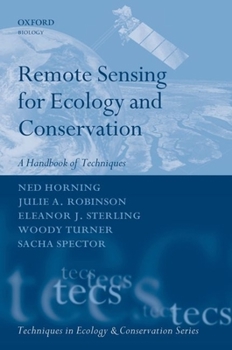Remote Sensing Ecology Conserv Tecs P
The work of conservation biology has grown from local studies of single species into a discipline concerned with mapping and managing biodiversity on a global scale. Remote sensing, using satellite and aerial imaging to measure and map the environment, increasingly provides a vital tool for effective collection of the information needed to research and set policy for conservation priorities. The perceived complexities of remotely sensed data and analyses...
Format:Paperback
Language:English
ISBN:0199219958
ISBN13:9780199219957
Release Date:August 2010
Publisher:Oxford University Press
Length:496 Pages
Weight:1.80 lbs.
Dimensions:0.9" x 6.2" x 9.2"
Customer Reviews
0 rating





